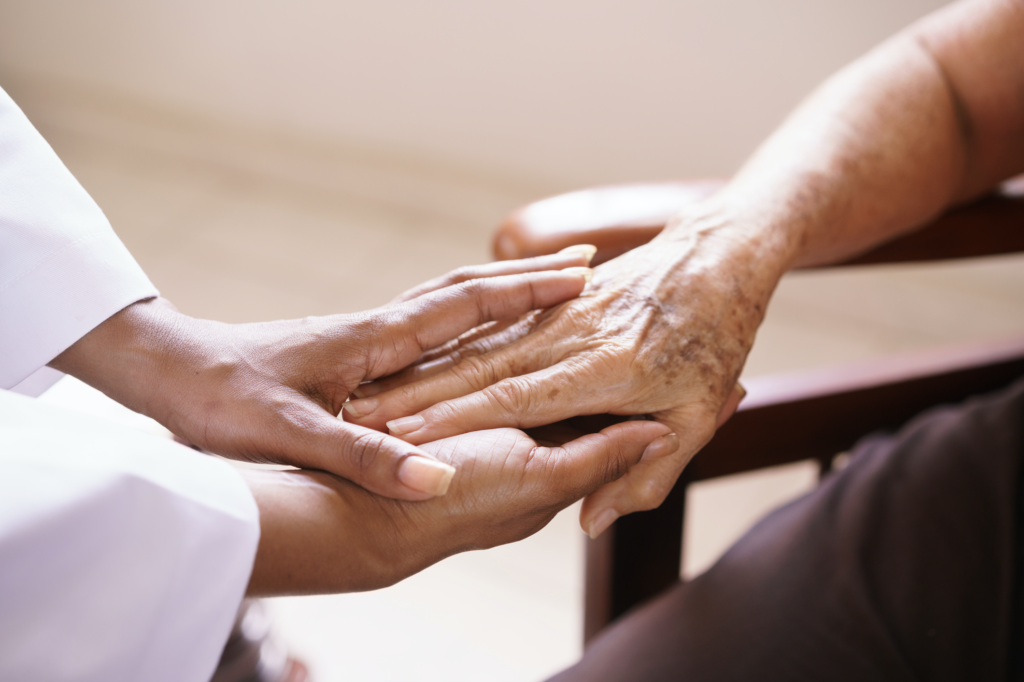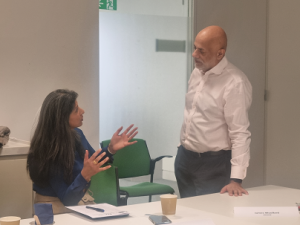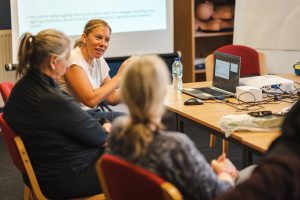If you can see it, you can treat it
October 28, 2021Blog
Post Title
Health Innovation Network Marketing and Communications Officer Rahel Gerezgiher reflects on why healthcare innovation won’t solve health inequalities until it achieves diversity.
This Black History Month we have seen numerous celebrations of Black individuals who have made in impact across all areas of society. Healthcare is no different. Warsame (Sami) Nur (NIA fellow 2021) and Ivan Beckley, Cofounder and CEO of Suvera Health, a platform for clinicians to follow up with patients remotely are just two examples of great Black innovators. However, more needs to be done to ensure that innovation continues to meet the needs of our diverse communities.
Let’s start with Evan Nathan Smith.
There are approximately 15,000 people in the UK who have sickle cell disease and Evan Nathan Smith was one of them. He was just 21 years old when he passed away after contracting sepsis, which triggered a sickle cell crisis resulting in his death. In May this year, his death was deemed preventable had staff recognised the symptoms associated with sickle cell disease earlier.
Sickle cell remains the fastest growing genetic condition in the UK with 300 babies born with the trait every year. It can affect anyone from any background but is most prominent in African and Caribbean communities. Evan was from Walthamstow, a borough with an estimated 53 per cent of residents from a minority ethnic background. So how were health care professionals in one of the borough’s local hospital unaware of how to care for someone living with this disease? Is it a lack of knowledge, unconscious bias or has sickle cell been an afterthought when it comes to merging innovation and healthcare? That is why it was good that this month saw the first new treatment for sickle cell in 20 years.
Diversity in education and training
Had a member of staff who was familiar with the symptoms associated with sickle cell or a crisis been around to advocate for Evan, would the treatment on offer been different and would there have been a different outcome? What if health care teams were training specifically on the diseases that most effect their local communities? Advocacy is key here and embracing this is vital to help tackle health inequalities. Speaking to others, it is not uncommon for people from ethnic minority backgrounds to present at a health setting and find a GP or another colleague has been called in to support or offer a different opinion on a diagnosis.
We need to have further training that better equips healthcare professionals when it comes to treating individuals from various different backgrounds to ensure that the right treatment/services are being offered.
Diversity in design
Another example comes to mind. During the height of pandemic, individuals with Covid were encouraged to use pulse oxygen monitors to keep an eye on their oxygen levels, which could be impacted as a result of the virus. However, the monitors didn’t work as well on darker skin. With Covid already affecting those of Black African or Black Caribbean descent at a higher percentage than their white counterparts (Black males were 4.2 times more likely to die from Covid than white males), the idea that an innovation to support treatment not being as effective on darker skin was concerning. Is it possible that there was no one from a Black community in any part of its creation or testing, that would have helped this fact come to light before its mass rollout?
Diversity within innovation – both the innovators themselves and those involved in the testing process – is key to ensuring that underrepresented groups are taken into consideration when creating new products or designing services. Being brave and calling on support in areas where there are clear gaps in representation within the team should be encouraged and embedded throughout the process rather than an afterthought.
Diversity in patient involvement
For those wise enough to harness the power of patient groups, what measures are in place to ensure that they are as diverse as they can be? Take the recent Remote Consultation in Mental Health project that we have been working on at the HIN, where we co-produced a suite of materials to support on the effects of remote consultations for those living with mental ill health, alongside people with lived experience. When creating the resources, an individual pointed out that marginalised groups need to be factored in, and it dawned on me that these groups are not only vital in helping us understand the patient’s personal experience, but so key in pointing out our blind spots. Somewhere this has been done well recently, was the OneLondon deliberation project. The project held a summit with over 100 individuals in order to reflect the diverse communities in London to discuss how different areas of the health and care system should be joining up their data sharing to provide the best possible care.
Diversity in leadership
We cannot talk about diversity without looking at the top. A survey showed that in 2019/20, 7.5 per cent of executive directors in Trusts were from a BAME background (81 out of 1,077 directors). As statistics go, that isn’t that shocking but could more diversity at the top have a real impact? We need to continue to ensure that our leadership is inclusive and reflects the communities they serve, so they can effectively advocate for them. Beyond it being the right thing to do, there is a clear business case for diversity too. CEO of Yorkshire and Humber AHSN, Richard Stubbs, explains in this video “a team with a member who shares a client’s ethnicity is 152 per cent more likely than another team to understand that client.” We need to be bold, and part of that is calling out the gaps where this can potentially impact of the care someone could receive.
Across maternity and mental health it is well documented that the outcomes are poorer for Black people. For instance, Black women are four times more likely than white women to die during pregnancy or childbirth in the UK and Black people are four times more likely to be detained under the Mental Health Act than white people.
Diversity is not a nice to have or a question of ticking a box, but in many cases now, can mean a matter of life or death.
So where can innovation fit in?
- Products shouldn’t be created using a one size fits all model, both the individuals producing and the products themselves should be inclusive and diverse. This is to ensure that this reflects the diversity of our communities and the products themselves are fit for purpose.
- Introduce a pledge to hold yourself accountable and to ensure that you are encouraging applications from a diverse range of innovators.
- Innovators shouldn’t just specialise in one area and encourage curiosity even if it’s not their usual area of expertise as there is strength in diversity.
- Tailor more services to cater to the most underrepresented communities in society to ensure the most appropriate service are provided, great example of a wellness clinic dedicated to Black and Asian communities here.
Things we can all can do to help:
- Donate blood. Black donors are ten times more likely to have a blood type needed to treat the 15,000 people in the UK with sickle cell. Black donors are in high demand, especially as we approach winter months.
- Be aware of how to advocate for yourself (explore resources around this), also support by advocating for others where appropriate.
- Participate in product trials or share feedback on your experience in healthcare settings. Whether good or bad this can all contribute to a better experience for all in the long run.
References
https://www.walthamforest.gov.uk/content/statistics-about-borough
https://www.mentalhealth.org.uk/a-to-z/b/black-asian-and-minority-ethnic-bame-communities
https://nhsproviders.org/inclusive-leadership/bame-representation-and-experience-in-the-nhs
https://nhsaccelerator.com/fellow/warsame-sami-nur/
https://www.bbc.co.uk/news/health-58032842
https://www.bbc.co.uk/news/health-58791333
https://www.independent.co.uk/news/uk/home-news/evan-nathan-smith-death-sickle-cell-b1827443.html



